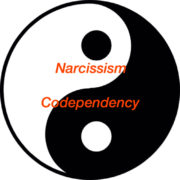There are a number of practices recommended by therapists to improve your relationship, all good. A few include making time to talk with your partner (and truly listening when you do), conveying appreciation and affection, managing conflict well, sharing rituals you both have come to expect and look forward to, supporting each other’s hopes and dreams, and having each other’s backs–loyalty. But one practice that goes unheralded, especially in American culture, is touch.

Sonja Lyubomirsky presents research that backs this idea up in her book The Myths of Happiness. Unfortunately we automatically link the notion of touch with the expectation that it must be sexual in nature. Research says that touch has a far greater impact on us than mere sexual satisfaction. And often incorporating small gestures of touch into our relationships can save mediocre relationships, you know, the ones where you feel you are existing as just roommates.
When we lack touch as infants, the results can be dire, often resulting in severe mental health conditions. Since touch is the newborn’s most developed sense, the healthy development of attachment, trust, and security is key in future intimate relationships for an individual. This has been extensively studied in orphan populations. Astonishingly, Lyubomirsky reports that even baby spiderlings are more likely to explore a new and strange environment if the mother spider has touched them relatively more!
Touch Is The Prescription
Touch is the prescription for a lukewarm relationship. It can rekindle feelings of kindness and remind you of the passion that may have dwindled over time. Even light stroking of your partner can reduce the tension caused by high emotions during conflict. And scientists are able to predict which couples are more likely to stay together or get divorced based on observing gestures and non-verbal communication between them.
Try This Experiment
Try this experiment and see if it rekindles a bit of tenderness with your partner. Over the next three weeks, gradually increase your touch interactions with each other. During the first week, simply brush lightly by your partner, perhaps giving a gentle pat on the behind or back while you are in the kitchen. Week two, make it a point to sit close enough to touch once in awhile. You don’t have to be annoying about it, and it can be across as well as beside one another. And in week three, don’t part without giving each other a kiss. Relationship expert John Gottman suggests a six-second kiss if you want to feel like you’ve been kissed!
I would love to hear from anyone who tries this prescription to see if it lights up your relationship, even a little. If the comfort level for touch is low for either partner, just go slowly; don’t push it. Talk to your partner if necessary about the purpose behind your gestures. And best of luck to you in combatting the very real phenomenon of hedonic adaptation, discussed in last week’s post. This is one more way to stem the tide.









